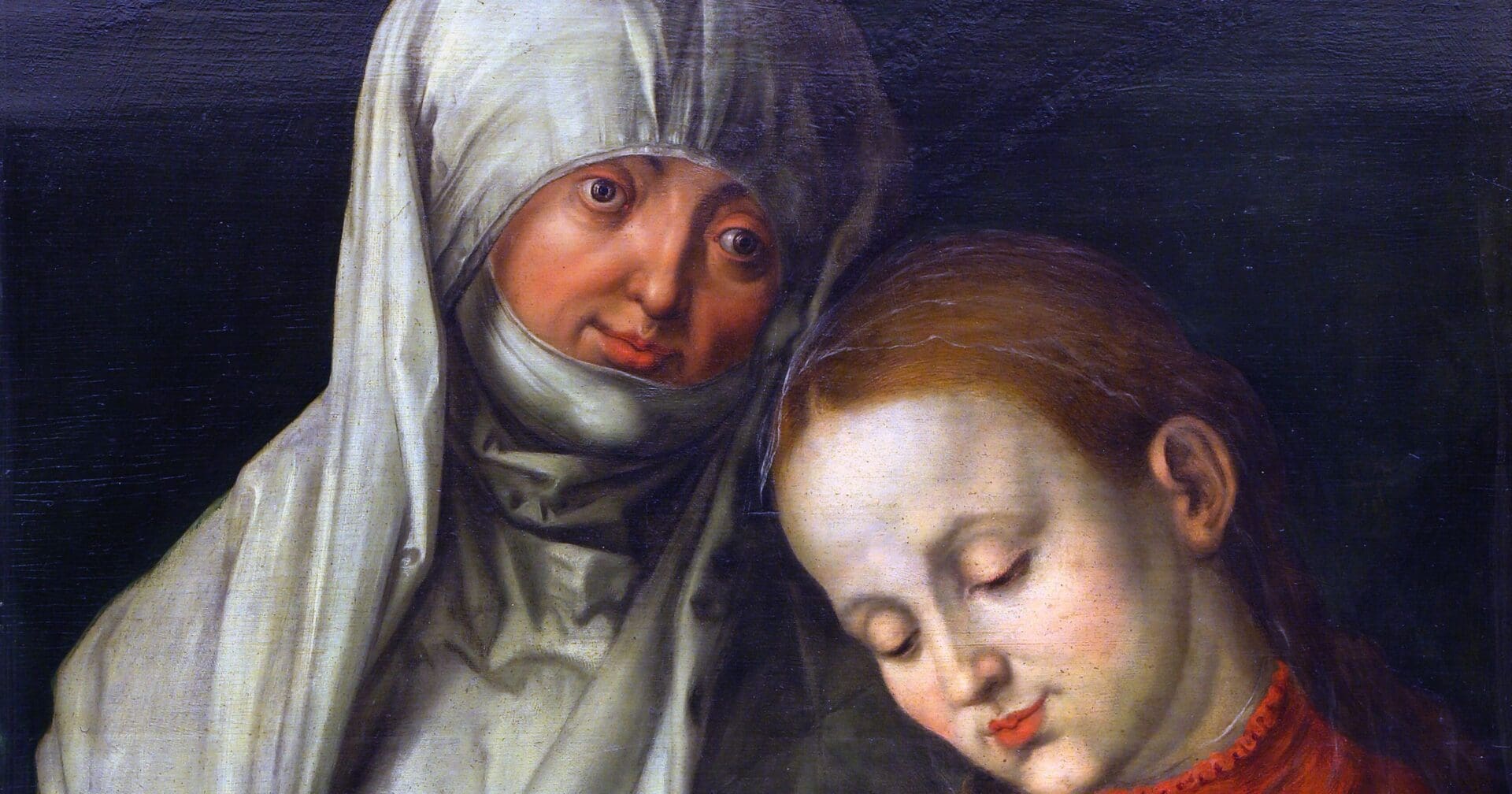The most widely known figure of Jesus Christ’s earthly family is of course, Mary. In the Church, we venerate her as the greatest of Saints and as the mother of Our Savior. However, compared to Mary and Joseph, we know relatively little about Jesus’ other earthly family members. Spread throughout the books of the Bible is sparse information relating to his family that can clue us into who His relatives were. Who was the Mother of Mary and grandmother of Christ, and what do we know about her?
Unfortunately, none of the books in the canonical Gospels shed any definitive light on the relatives of Jesus Christ. What we do know comes from apocryphal gospels, the Gospel of James and the Gospel of Pseudo-Matthew. The earliest mention is in the Gospel of James written around the year 150, which states that Saint Anne was the grandmother of Christ. However, we cannot take this statement beyond a shadow of a doubt. Early Church fathers rejected the Gospel of James, with Pope Innocent I condemning it the year 450 AD in the epistle Ad Exuperium, and 800 years later Saint Thomas Aquinas remarked on its contents “These words prove the falseness of the apocryphal ravings.” Never the less, in a popular medieval collection of hagiographies, the Golden Legend, the story of Saint Anne spread throughout the West and was eventually incorporated into Church tradition.
According to tradition, Saint Anne was part of a family of wealth and was married to Saint Joachim. She did not give birth to Mary until she was quite elderly, and prayed all her life to the Lord to bear a child. She promised the Lord she would dedicate her child to His service, and her prayers were one day answered. An angel came to her and said “Anne, the Lord has looked upon thy tears; thou shalt conceive and give birth and the fruit of thy womb shall be blessed by all the world”. Saint Anne soon gave birth to a single daughter, who she named Mary. Following through on her promise, by the age of three she had given Mary up to service in the temple, leading Mary to a long life of piety.
Relics of Saint Anne were supposedly brought from the Holy Land to Constantinople the year 710, where they were housed in the Church of Saint Sophia until the year 1333. During the twelfth and thirteenth centuries, Crusaders returning from the East brought with them relics of Saint Anne that found themselves settling all throughout churches in Europe in the cities of Apt, Provence, Ghent, and Chartres. Since the decree of Pope Julius II in 1506 have her relics stored there, the most famous pilgrimage site for Saint Anne is at the St. Anne’s Church in Vienna Austria. Housed in the church is the bones of her right hand contained in a reliquary in an ornate Baroque style.
Saint Anne is the patron saint of childless people, grandparents, carpenters, and sterility. Today, we celebrate the feast of Saint Anne along with her husband Saint Joachim on July 26th.
Editorial credit: Zvonimir Atletic / Shutterstock.com

















I have always wished for more information on Our Lady’s mother, thank you xx
My dear patron Saint Anne,
I remained childless throughout my life after three early miscarriages.
My mother, Mary dedicated me, her
only daughter to the protection of Our Blessed Mother Mary.
I know they both are Always with me.
❣🙏